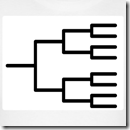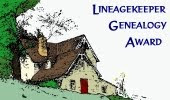Wednesday, February 5, 2014
Tuesday, February 4, 2014
Huge Genealogy Records Announcement From FamilySearch
FamilySearch made a big announcement about genealogy records on the day before the start of its huge RootsTech Conference in Salt Lake City.
They announced agreements with major commercial family history companies that removes barriers to genealogical research tied to records residing on subscription based sites. The agreement partners FamilySearch with the subscription sites opening their records to the sites where allowed by usage rights and the sharing of many records held by the subscription sites.
The largest surprise in the announcement is the plan to put all of the genealogy records in the world online during the next 20 – 30 years. Those of us who have been involved in the digitization of those records for years have a great appreciation for the scope and depth of this statement. It will require more resources and investments than probably anyone envisions at this time.
Have no doubt about it happening though. FamilySearch will see that it happens.
Here are some interesting facts from the announcement:
- Approximately 28 billion people lived on the earth in recently recorded history—from A.D. 1500 to 2010.
- Information for an estimated one billion unique individuals may exist today in online family trees—a fraction of how many still need to be linked.
- The bulk of online family history research today is focused on the records of North America, Europe, and Latin America. Less than seven percent of these records are searchable online today.
- An estimated 60 billion historical records still exist to be digitally preserved and indexed.
- Only eight percent of FamilySearch’s current online indexing volunteer workforce is non-English speaking. The majority of historical records to be made searchable online in the future will require volunteers who read non-English records.
- With current volunteers and resources, it could take up to 300 years to make the current inventory of historical genealogical records searchable online. This time can be reduced to 20 to 30 years with more business and community involvement. Disclaimer: FamilySearch does not establish relationships with third parties or take other steps that may be in violation of the terms of contractual obligations. As a result, FamilySearch may not be able to provide some information, records, indexes, or other data to third parties or the public.
The infographic about the project shows how huge the project is in regard to sheer numbers.

You may not think you are going to participate in the project, rest assured, that because of your interest in genealogy and are reading this post, you will participate in it in one way or another over the next couple of decades.








